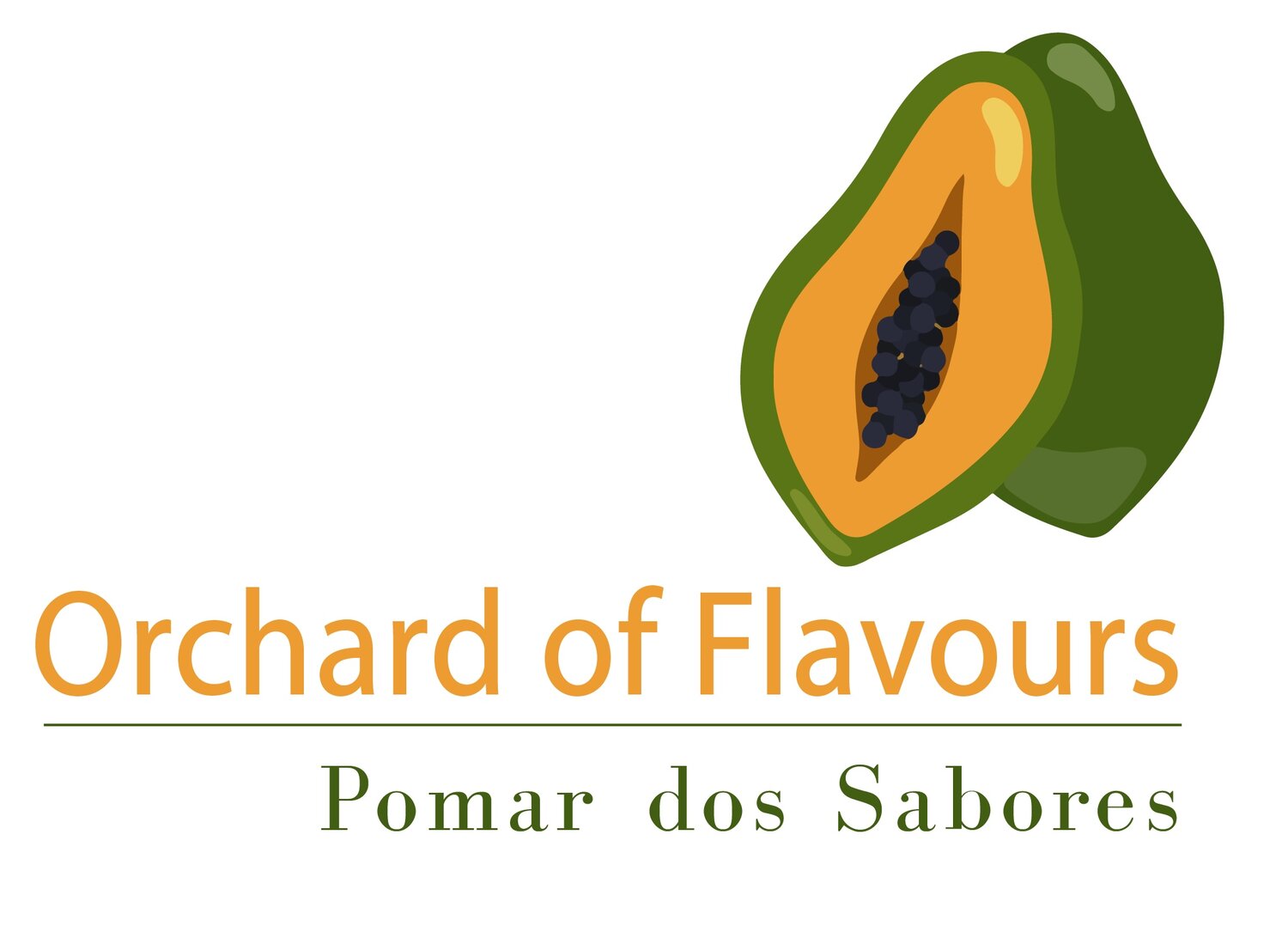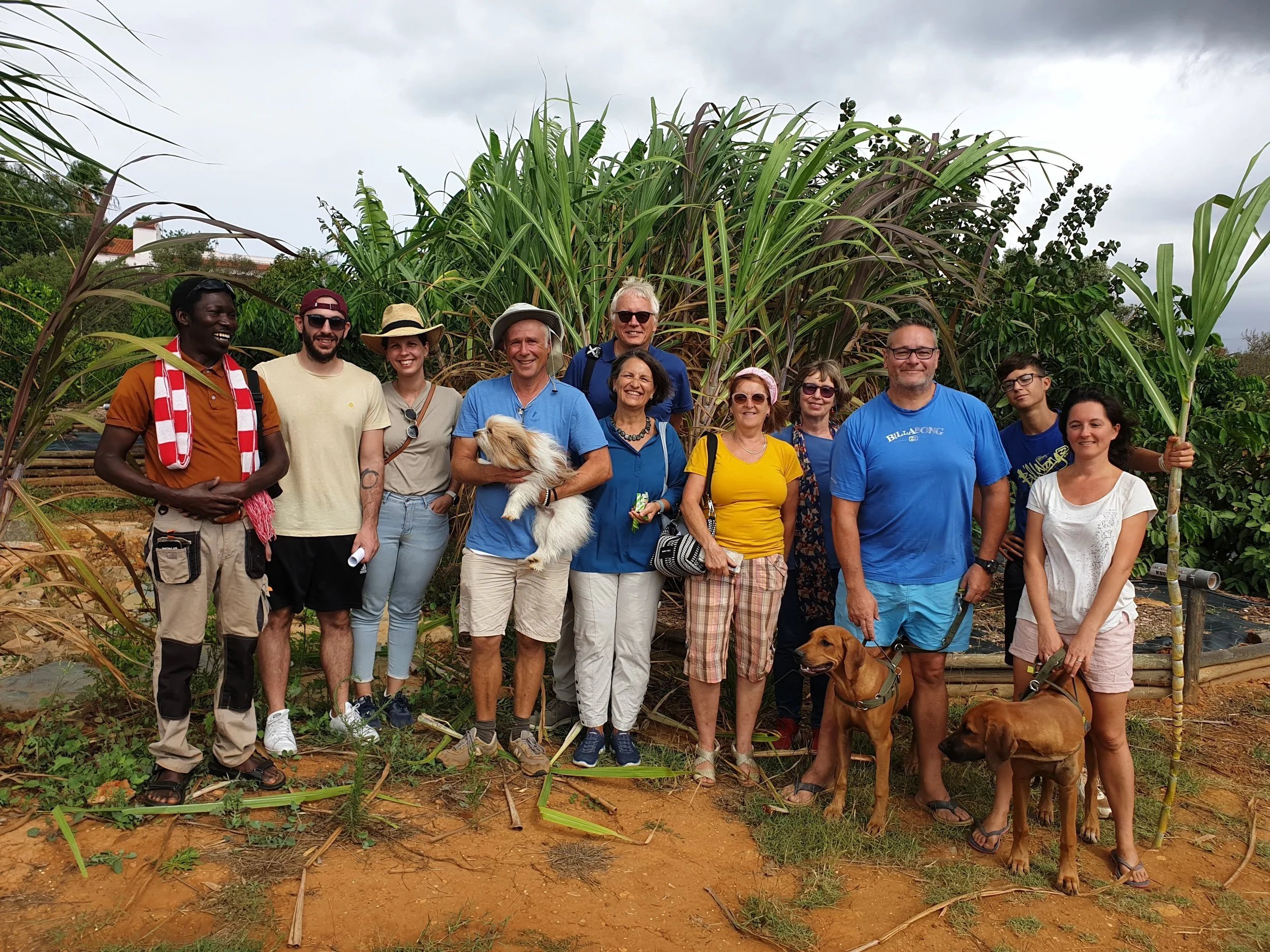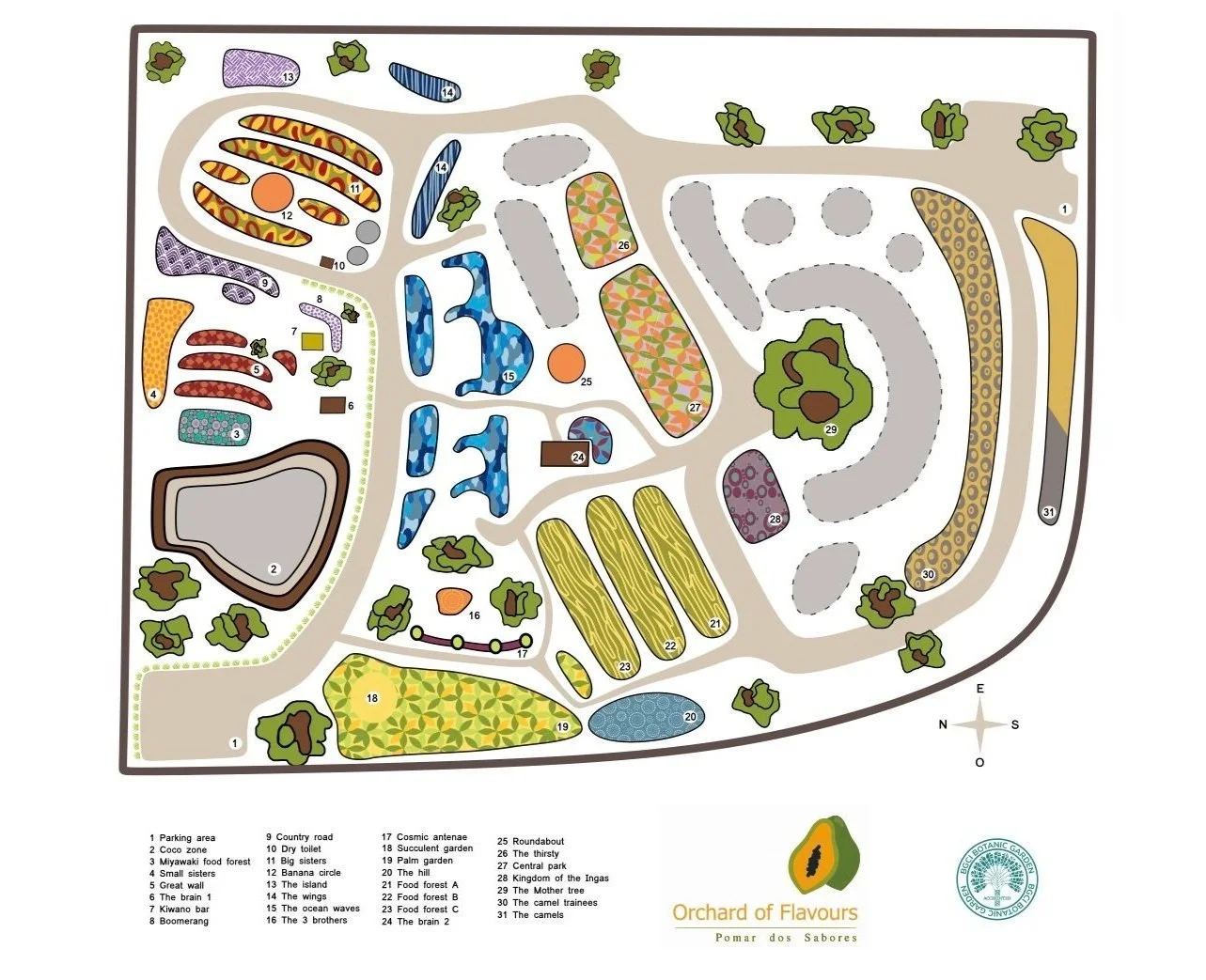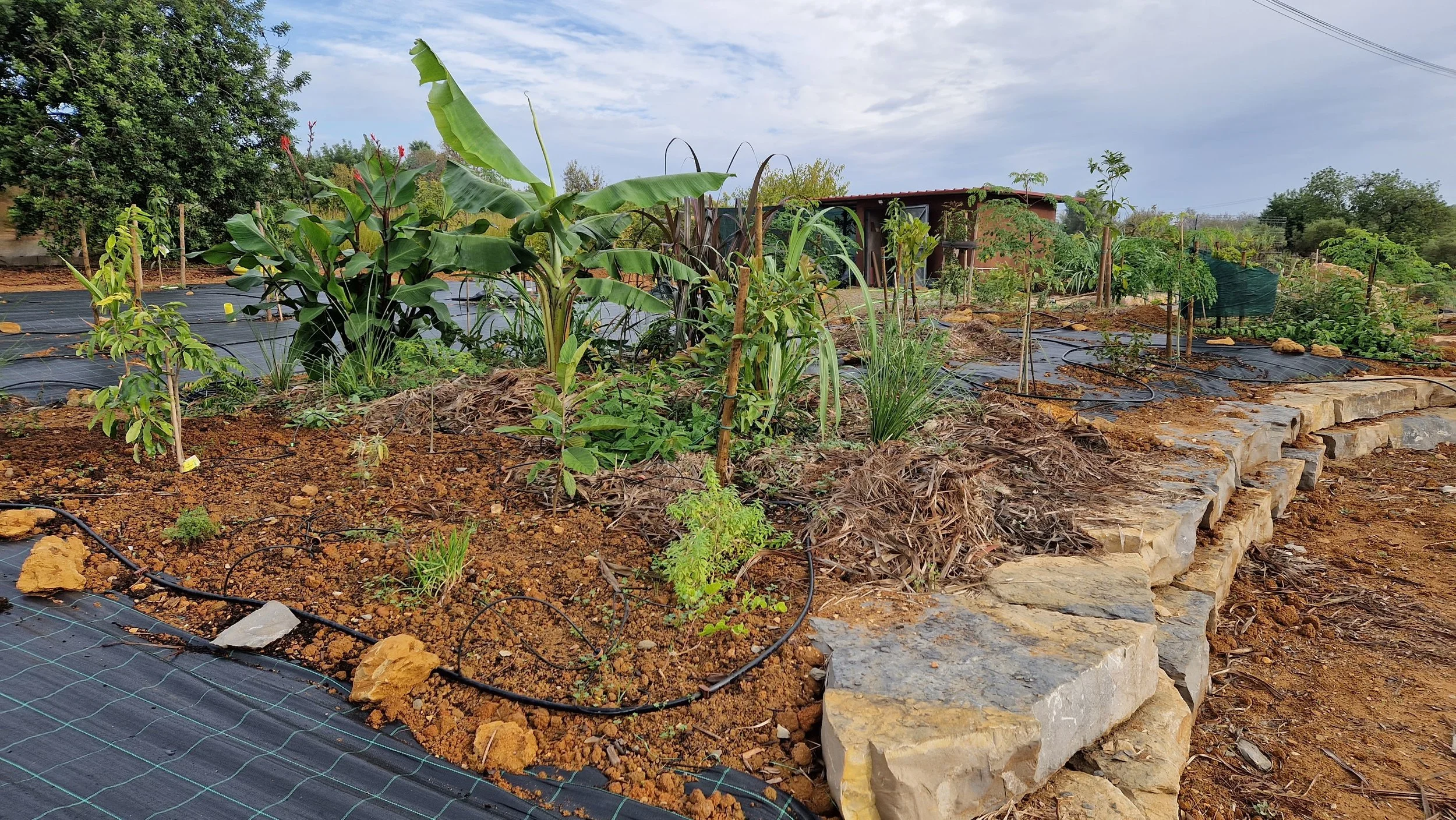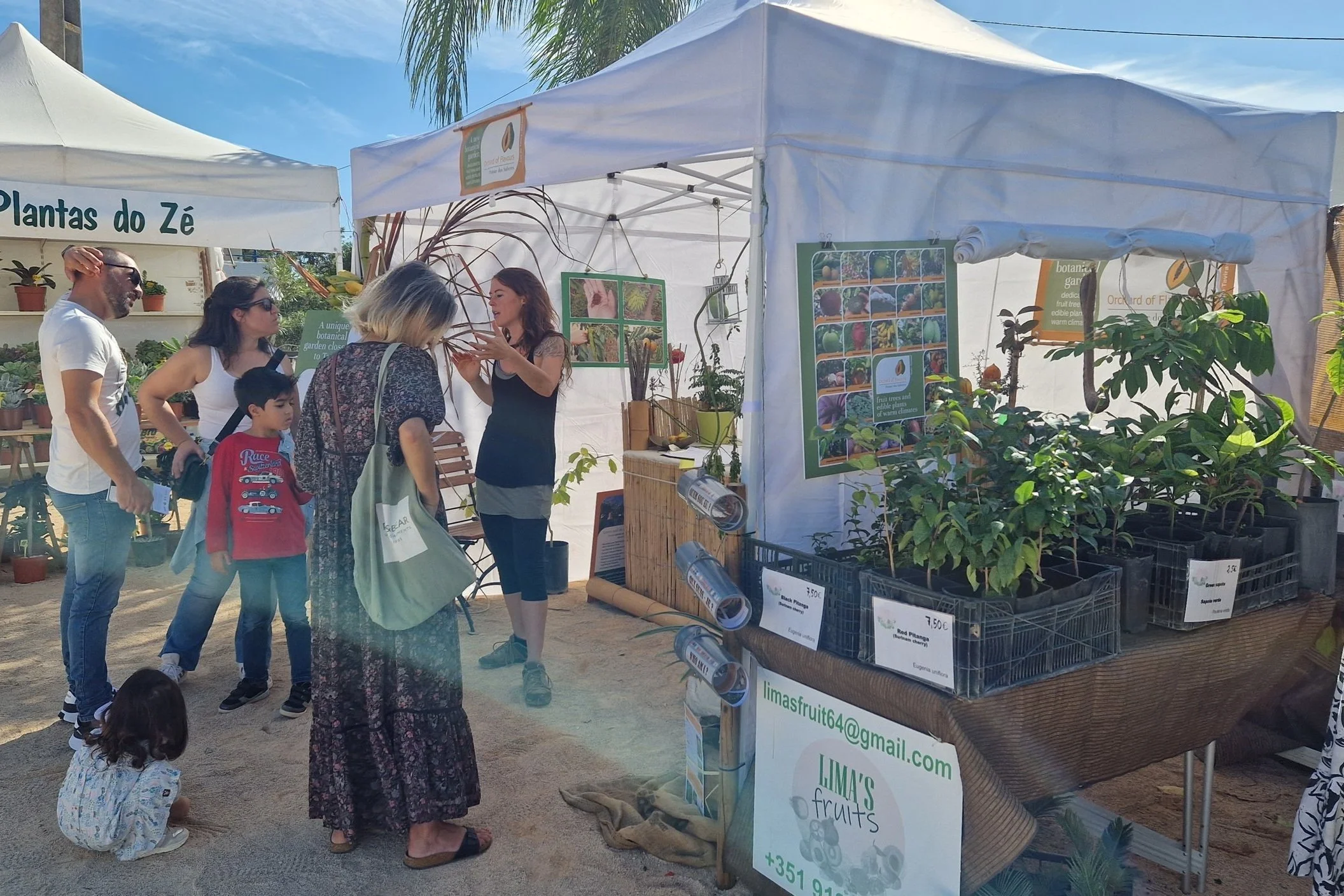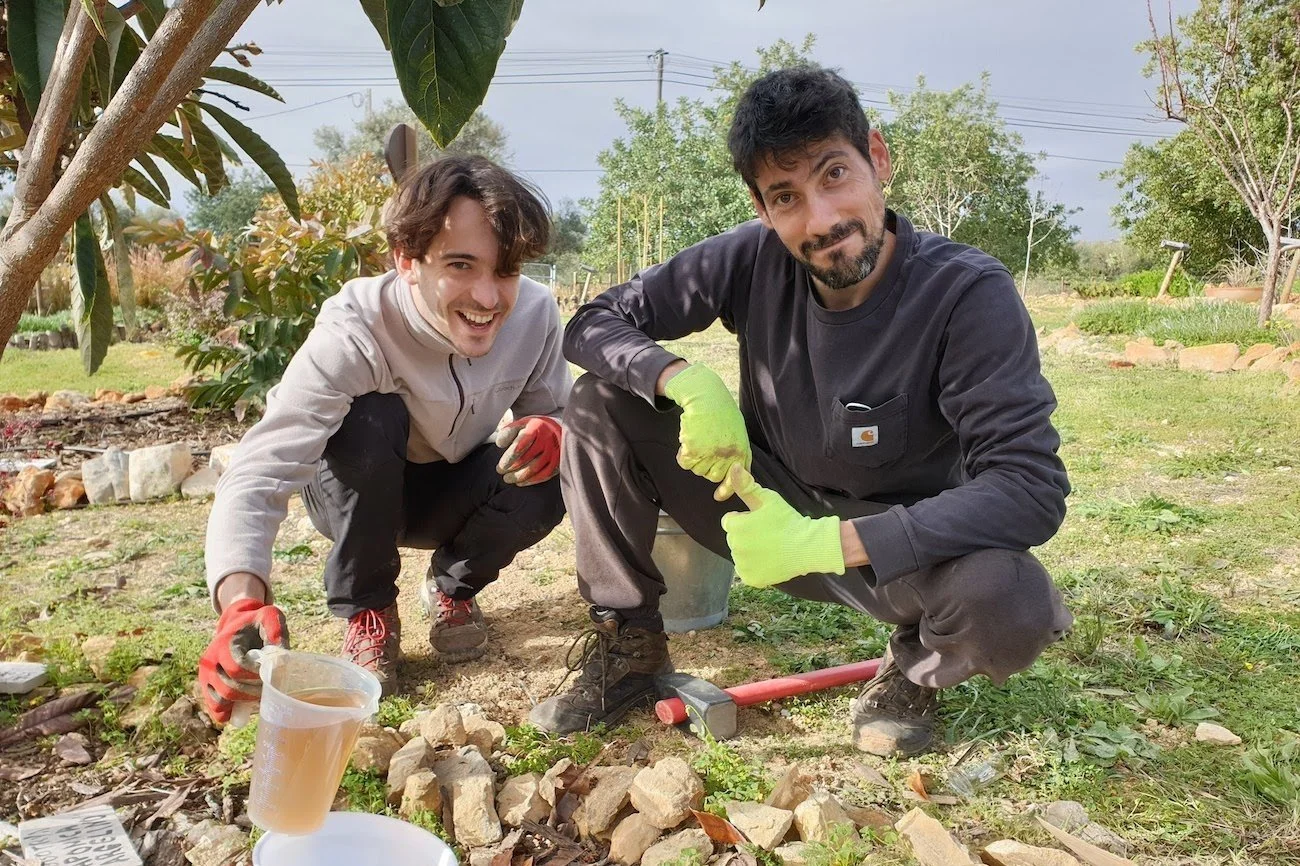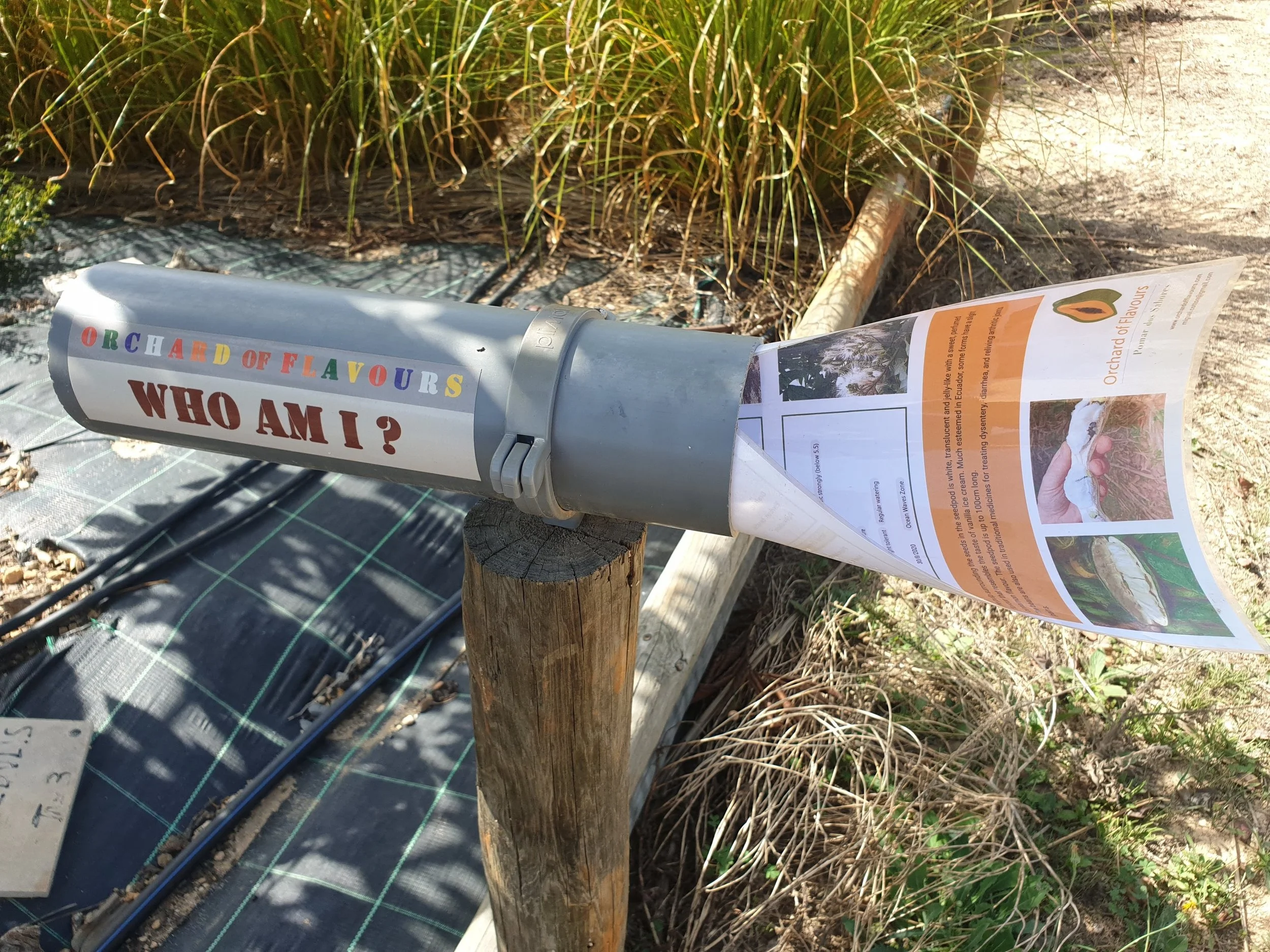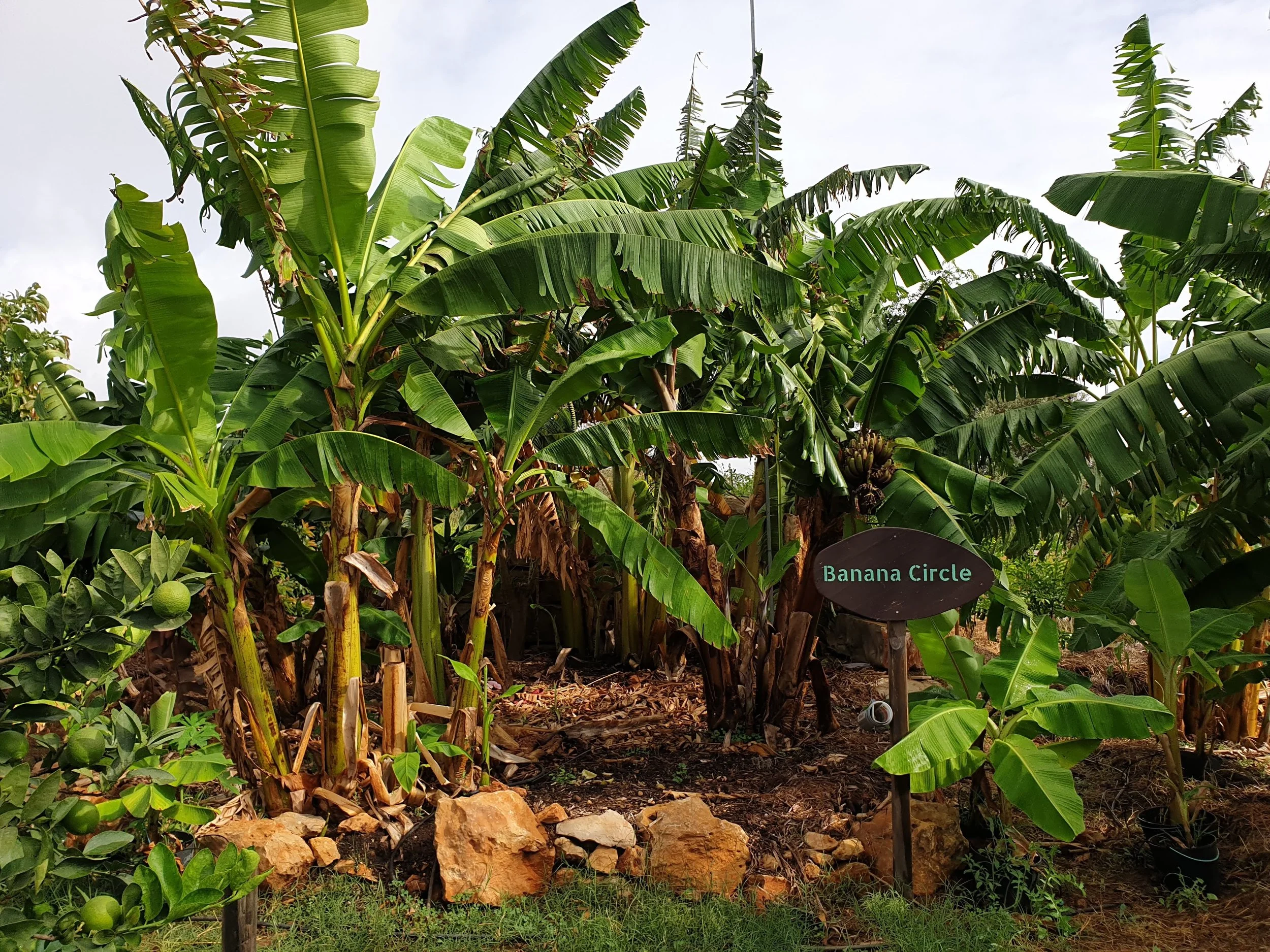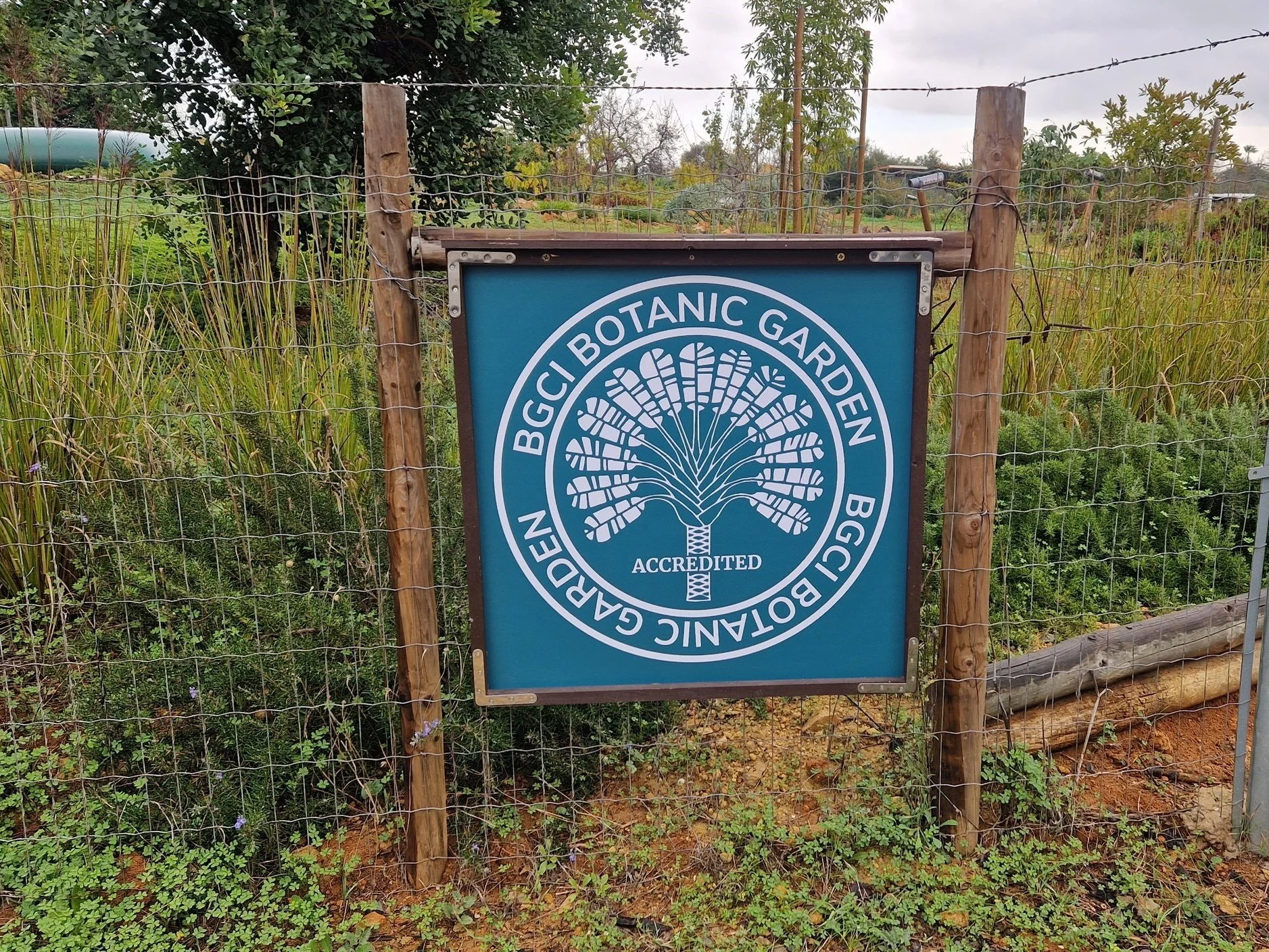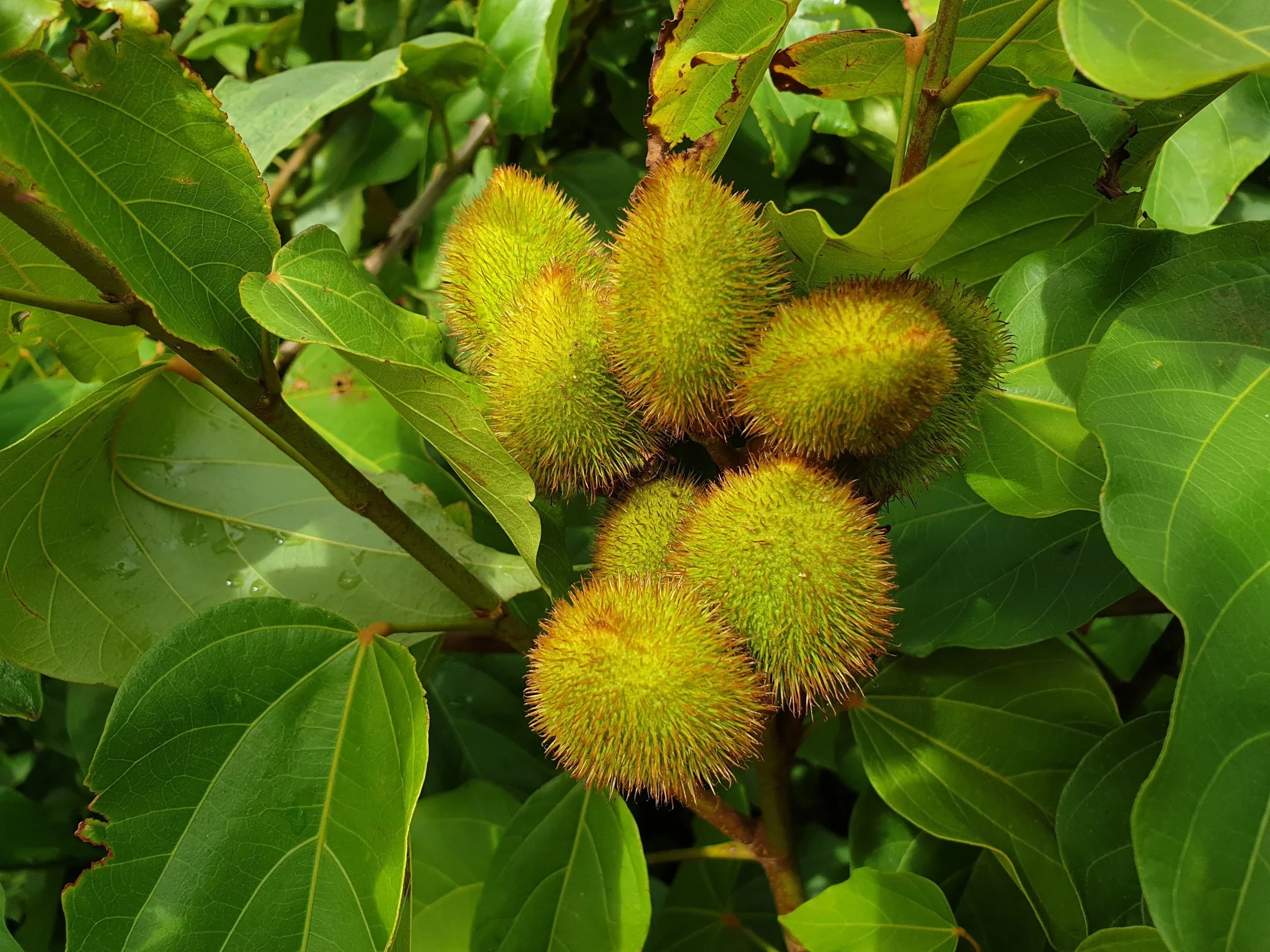Botanical garden mission
Miguel COTTON and Gulliver, the dog, showing the Orchard of Flavours to a group of fellow plant enthusiasts on a tour.
Vision and mission
Our botanical garden started with a very clear purpose, and with a very simple, basic idea on how to achieve it.
The purpose is to find a direct and instinctive way for people to relate to and love nature, especially the younger generations. We believe this is an essential step towards creating a sustainable future for humanity.
A very personal and also very organic way to spark that connection is through our stomachs. “Eat, respect and love” is our motto. That is why the Orchard of Flavours garden is dedicated to fruit trees and other edible perennial plants. We might be the only botanical garden where kids are happy and not bored by the Latin names of plants. Here, surrounded by edible plants and fruits with completely different flavours to the ones they know, they can live fun and memorable experiences, full of exploration and excitement.
The greatest challenges of our time
Extreme weather events due to climate change, combined with the destruction of soils and ecosystems, are quickly becoming the greatest threat to the increasing world population, challenging water and food sovereignty across the globe. Something has to be done!
Climate change is happening, and we are trying to adapt by:
finding fruit trees and other edible plants of warm climates that can be grown in similar climates to ours, in Southern Portugal;
identifying what species or varieties of fruit trees are more resistant to pest and disease.
(Xylella fastidiosa has the potential to kill hundreds of species in Europe, including some of the most important families such as Rosaceae)
Water is becoming scarce and we must study the techniques to use it sparingly.
We are finding solutions by:
finding drought-resistant and drought-tolerant fruit trees, and techniques to save our trees in case of drought;
using advanced technologies such as moisture sensors, micro irrigation and weather stations to better record the extent of evaporation and moisture requirements of our plants;
experimenting with different mulches and growing mediums;
adding adequate fertility to help our plants better handle moisture stress;
studying the most advanced water saving techniques in the industry.
One of the planting areas at the Orchard of Flavours.
A work of many hands.. and minds
Because our ambitious tasks cannot be achieved by our core team alone, Orchard of Flavours is committed to:
running as a non-profit and totally open-source project;
bringing together several different profiles:
collaboration between locals, expats & migrants is encouraged;
and also between horticulturists, permaculturists, scientists, volunteers, local gardeners, plant collectors;
making the project resilient and strongly connected within the community, by establishing links with a local university and the city hall.
Carla LEVY, one of the Orchard’s first collaborators, at MGAP 2022 Autumn Garden Fair, in Estoi.
WWOOF Volunteers Jules and Miguel, working at the Orchard of Flavours.
Researching and sharing the knowledge for a better present and future
Orchard of Flavours aims to contribute to research and innovation, sharing all knowledge and results obtained. Our research priorities are clearly defined:
finding fruit trees which can be grown successfully in our climate and similar ones;
researching on water saving techniques;
research on the most resistant fruit trees to pests and/or disease;
regularly updating the plant database with information that can be useful to similar projects or organizations.
As well as sharing as much of our newly-found knowledge as possible on this website, educational initiatives are carried out in the form of guided tours, workshops and hosting of volunteers. The edibility of the plants allows for visitors and students to relate to the plants easily, regardless of their existing experience on the subject.
Inga edulis (Ice cream bean) pod.
Tree information sheet for Inga edulis (Ice cream bean).
Working with the land, for the land
Banana cirle at the Orchard of Flavours.
We believe a more carefully thought-out design of our landscapes will ensure the ideal management of our resources. These are the different ways we put it in practice:
Ceiba pentandra (Kapok tree) in the foreground, at the Orchard of Flavours’ Coco Zone.
through site analysis, identification of suitable planting zones based on soil type, sun aspect and other important environmental factors;
design of the planting areas along the contour of the land in order to encourage water infiltration;
the use of forest gardening techniques to provide the multi-strata and diversity of layers necessary to mimic a natural ecosystem;
creation and identification of microclimates through the use of rock walls, natural windbreaks and construction of windbreaks made with natural and manufactured materials;
mitigating and limiting erosion through the planting on contour of vetiver and other deep-rooted plants where necessary;
the use of different mulching techniques depending on the requirements of the plants;
creating small bodies of water for insects, as well as other pollinators and fauna, to encourage diversity;
planting of low-maintenance, pollinator-attracting plants to encourage more pollination and diversity across the area.
Sustainability
by using locally sourced products whenever possible;
by buying all the other products to local people, and to recycle or upcycle as much as we can.
Visitors, education, public engagement
our aim is to make the garden open to the public as fully as possible. Up to now, the garden is open upon request;
we also started hosting workshops where we teach about agroecology practices applied at the botanical garden, such as the growing of Food Forests and the use of Propagation techniques;
on our website, our aim is to be as open-source as possible and share our experiences and research. Our philosophy is “Learn and then do it by yourself”.
Orchard of Flavours is a BGCI-accredited Botanic Garden.
Bixa orellana (Lipstick tree) fruit.
